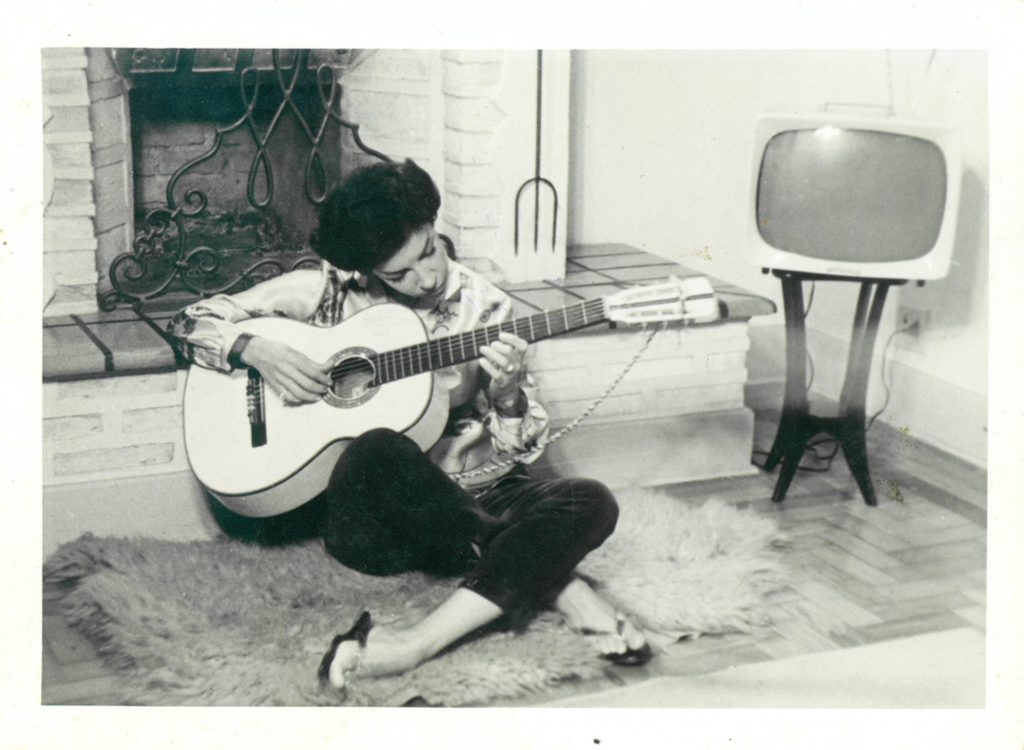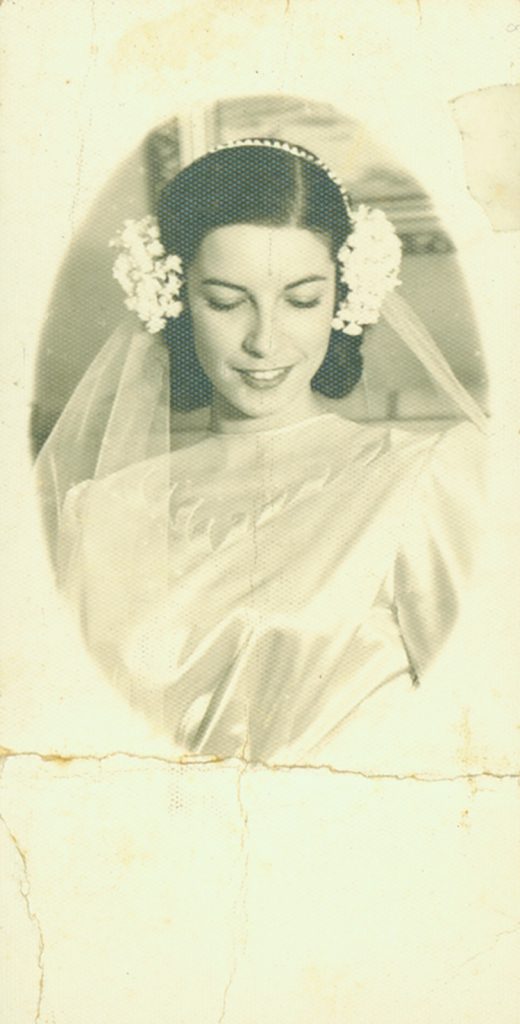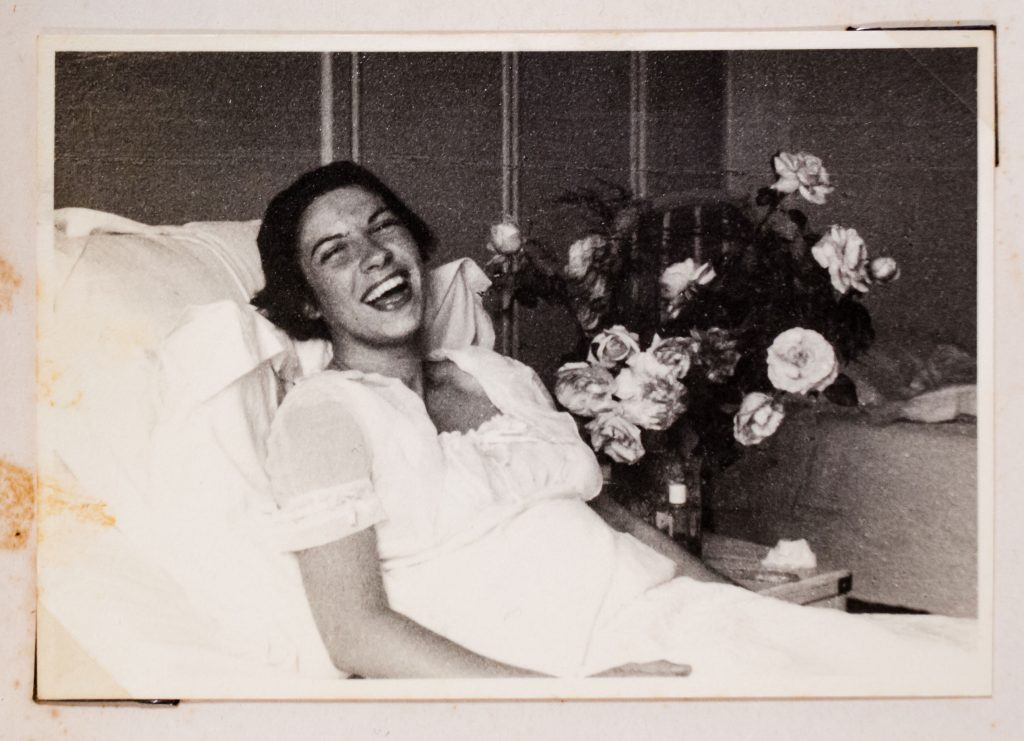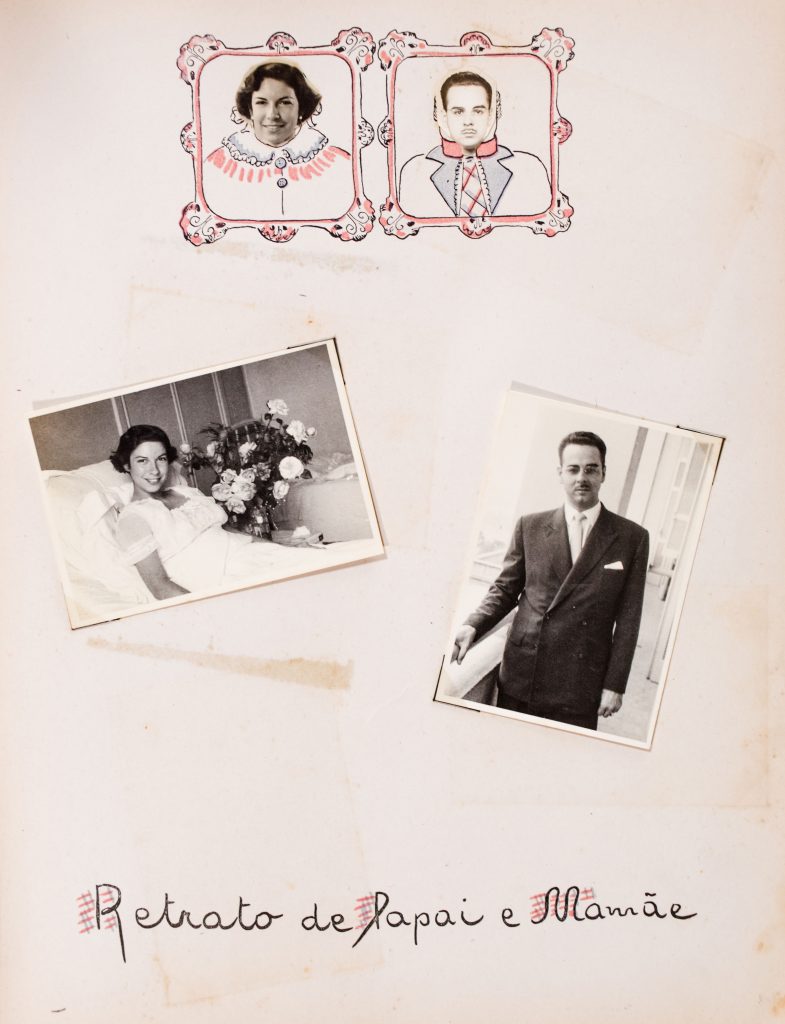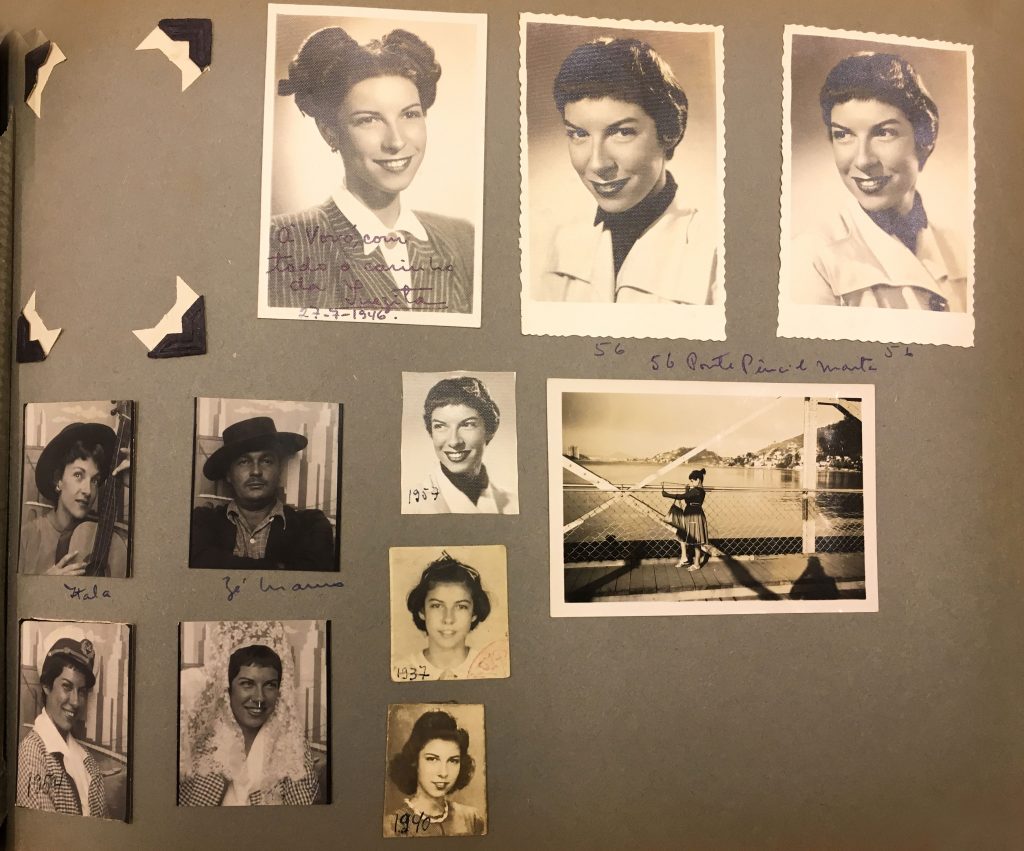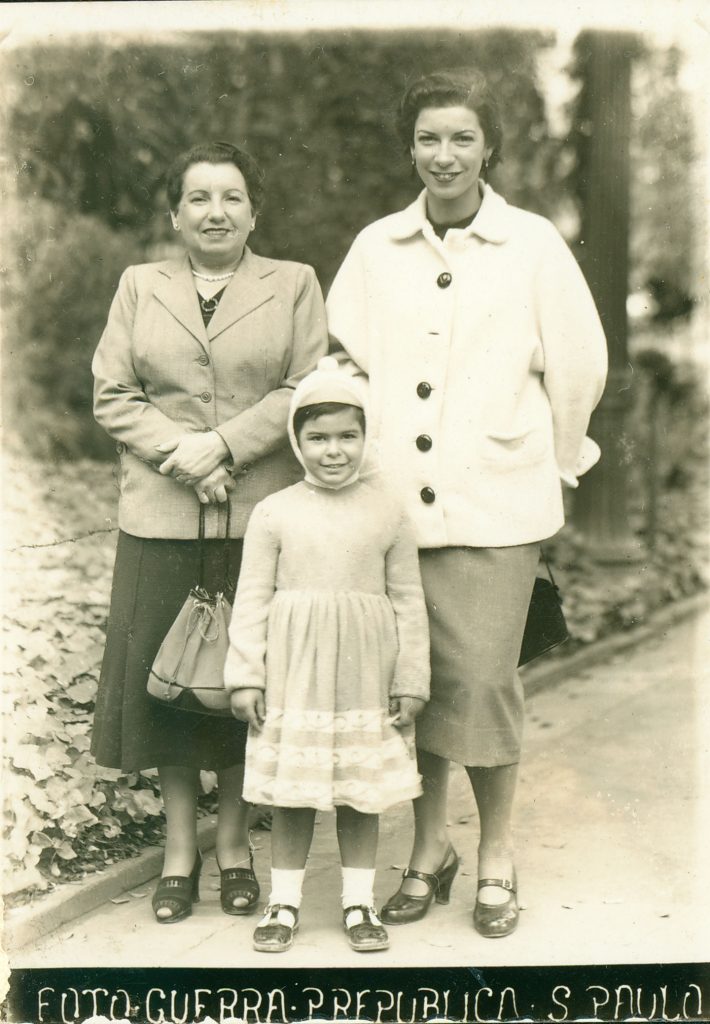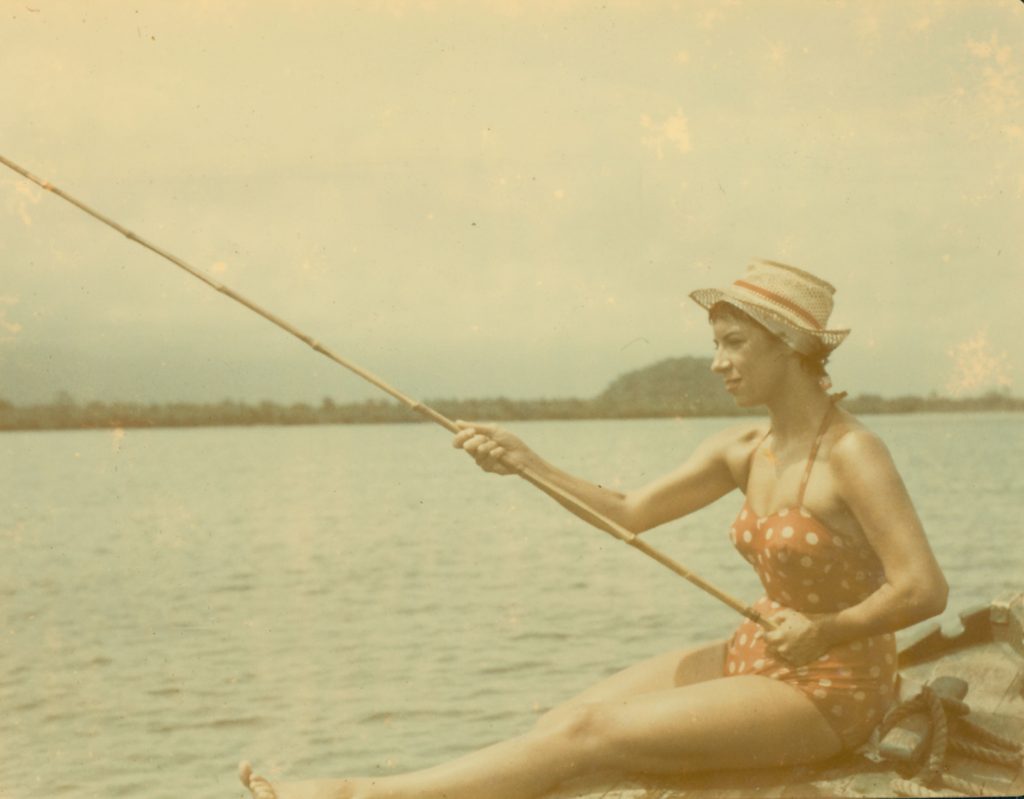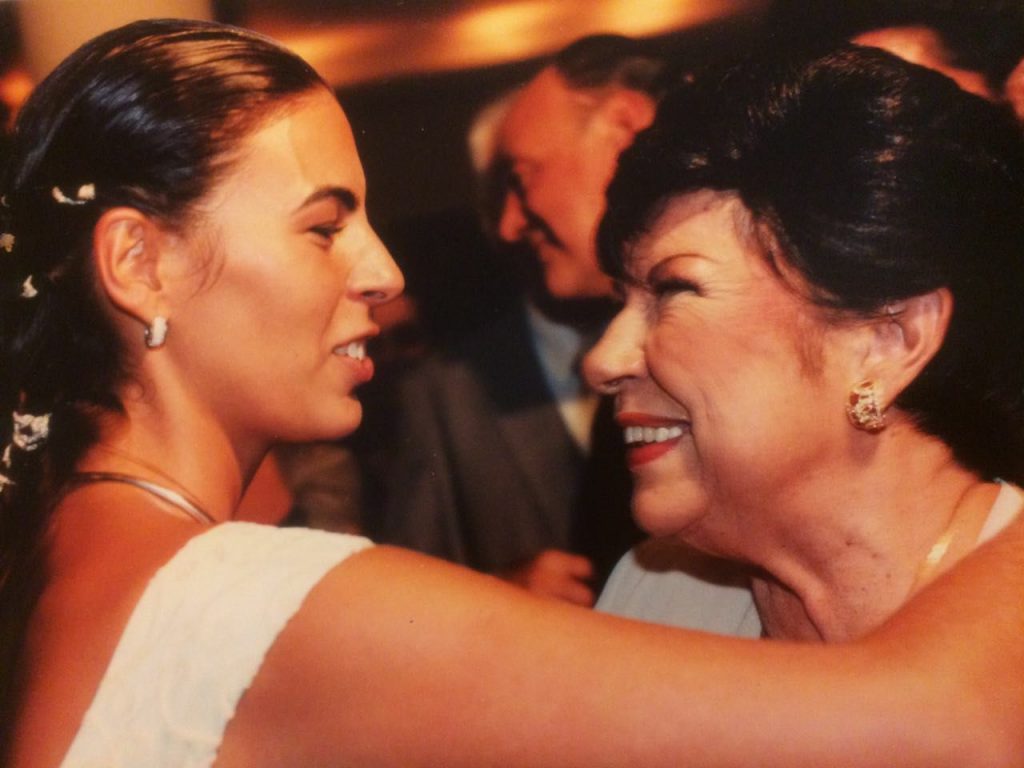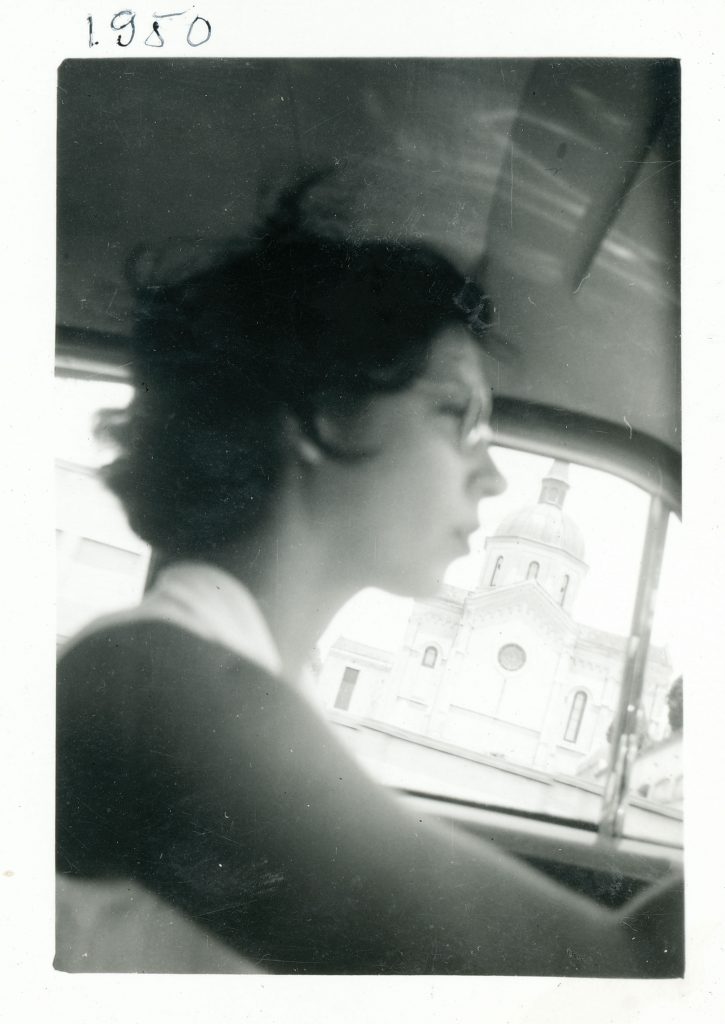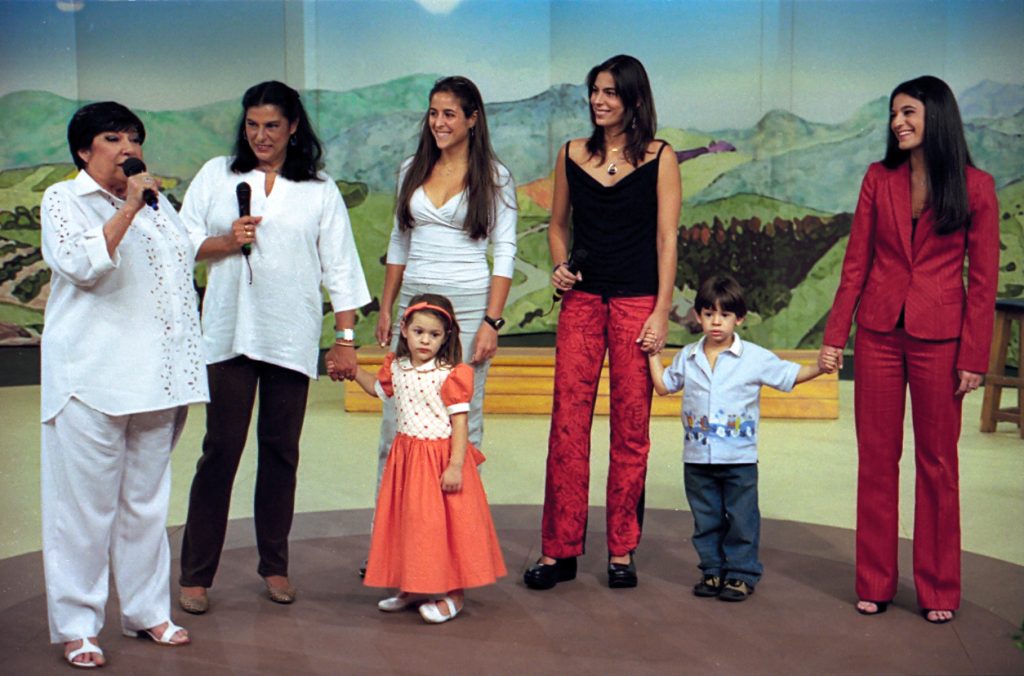Youth

She used to say she was half land, half sea. Her mother’s family owned farms in the countryside of São Paulo; her father’s came from Pará and had roots at Santos, a costal town. Despite this dichotomy, nobody knows that the girl in love with the “caipira” culture preferred the seaside.
In the family, the dichotomy went beyond geographical matters. The maternal family was more traditional and rigid than her father’s, which was more liberal and less severe. Inezita Barroso always talked a lot about everyone and everything, from the time spent with her uncles and cousins, to the importance of the brother-in-law who was an actor and introduced her to several artist friends.
By Paulo Freire*
* Curator of Ocupação Inezita Barroso, Paulo Freire tells the story of a 90-year-old lifetime, full of music and storytelling. Divided into six chapters (The girl, The family, The artist, The researcher, Ohh, how I love this show! and A legacy), the narratives spread through the site, mapping the life of one of the most important artists of Brazilian popular culture. Welcome to the beginning of this beautiful journey.
At the age of 18, Inezita met Adolfo Barroso, with whom she married four years afterwards. Her husband’s family loved arts and from that moment on Inezita Barroso was in fact born! In 1949, she gave birth to their only child, Marta.
Adolfo graduated from Law School at Largo São Francisco. In meetings and reunions promoted by the academic center XI de Agosto, Inezita was already an outstanding person playing the guitar and singing. Adolfo’s brother, Maurício Barroso, was an actor at Teatro Brasileiro de Comédia (TBC). Since the time they’re dating, Inezita attended the academic center and followed the theater productions. She hung out with artists such as Paulo Autran and Tônia Carrero, not to mention bohemians such as the biologist and composer Paulo Vanzolini.
At the meetings of theater professionals, they always gave Inezita the guitar. With her firm contralto voice, her repertoire was provocative, since she played mot only radio songs, but also songs from the countryside, such as “Boi Amarelinho, “A Viola e o Baraio” and the powerful “Moda da Pinga”! Imagine that beautiful young woman, from a traditional paulista family, singing a song about a girl who was drunk, felt on the floor, stayed lying down and had to go home carried by two soldiers.
She was 31 when she divorced Adolfo in 1956.
Seção de vídeo
Inezita Barroso, whose paternal family was from a seaside town, nurtured a declared passion for the beach | picture: personal collection
1/10
By Jullyanna Salles
All her life Paula heard she looked alike her grandmother Inezita Barroso. When she was young, she didn’t like being compared to a woman who was decades older, as if she was offended – “a teenager reaction”, she said just kidding. Years later, together with her young children, she watched a movie stared by the singer and had to explain them that this actress was not their mother. She finally understood she carried the legacy of her most famous family member.
There were other occasions when Paula had to deal with her grandmother resemblance. “In Paris [France], someone on the bus asked me if I was Brazilian. I answered yes. Then he asked: ‘From São Paulo, isn’t it? I said yes again, finding that really weird. He concluded: ‘You’re Inezita Barroso’s granddaughter, right?’ It was a former employee from TV Cultura”, she explained, laughing.
To shy to fit the stage, Paula followed also an artistic career, however away from the public. Plastic artist, she states that the resemblance is not only physical. “We’re very determined, you know? Even if someone says something is not allowed, if it’s something we are certain about, nobody will make us change our minds.”
Either because of her career in a masculine world, or the divorce in a time when it was a taboo or even a journey through out Brazil only with her brother-in-law and a friend to study the culture of the country, Inezita never fit within the expected model for a woman of that time. This personality also influenced her positioning towards her family.
Paula recalls how Inezita avoided the traditional roll of an quiet and peaceful old woman: “I remember once, when my children were about 4 or 5 years old, I was in São Paulo and invited her to dinner with me. She chose to eat barbecue. It was not very usual for an old lady to eat barbecue for dinner during the week, but my grandmother was different. However, what surprised me was the appointed time: ‘Come for me at around 10h30, 11h p.m’, she said. I had to change my plans, didn’t take my children, who were supposed to be asleep so late at night. And she concluded: ‘Yes, leave the children at home and we’ll have more time to chat’. This happened about 10 years ago when she was around 80. She wasn’t definitely a traditional grandma”.
Generally speaking, Paula and her children had a narrow contact with Inezita. They saw each other every week, but rather than a traditional Sunday lunch, they met at her granddaughter’s home at night for a pizza. Grandma brought her guitar and played to the children all night long. Paula stands out that, even after her grandmother’s death, her memories are present in their lives. “My children remember her very well, for they’re grown-ups when she passed away. One of them plays the electric guitar nowadays (she would regret it, I suppose) and always says the great-grandmother is his inspiration to do so.”
Coincidently, Ocupação Inezita Barroso opens on September, 27, Paula’s Birthday. “It’s my grandma’s influence directly from heaven”, said her laughing, when she acknowledged the date.
Slides found at Inezita’s personal collection, with pictures from 1950s to 1970s, with family members and during trips | picture: personal collection
1/10
